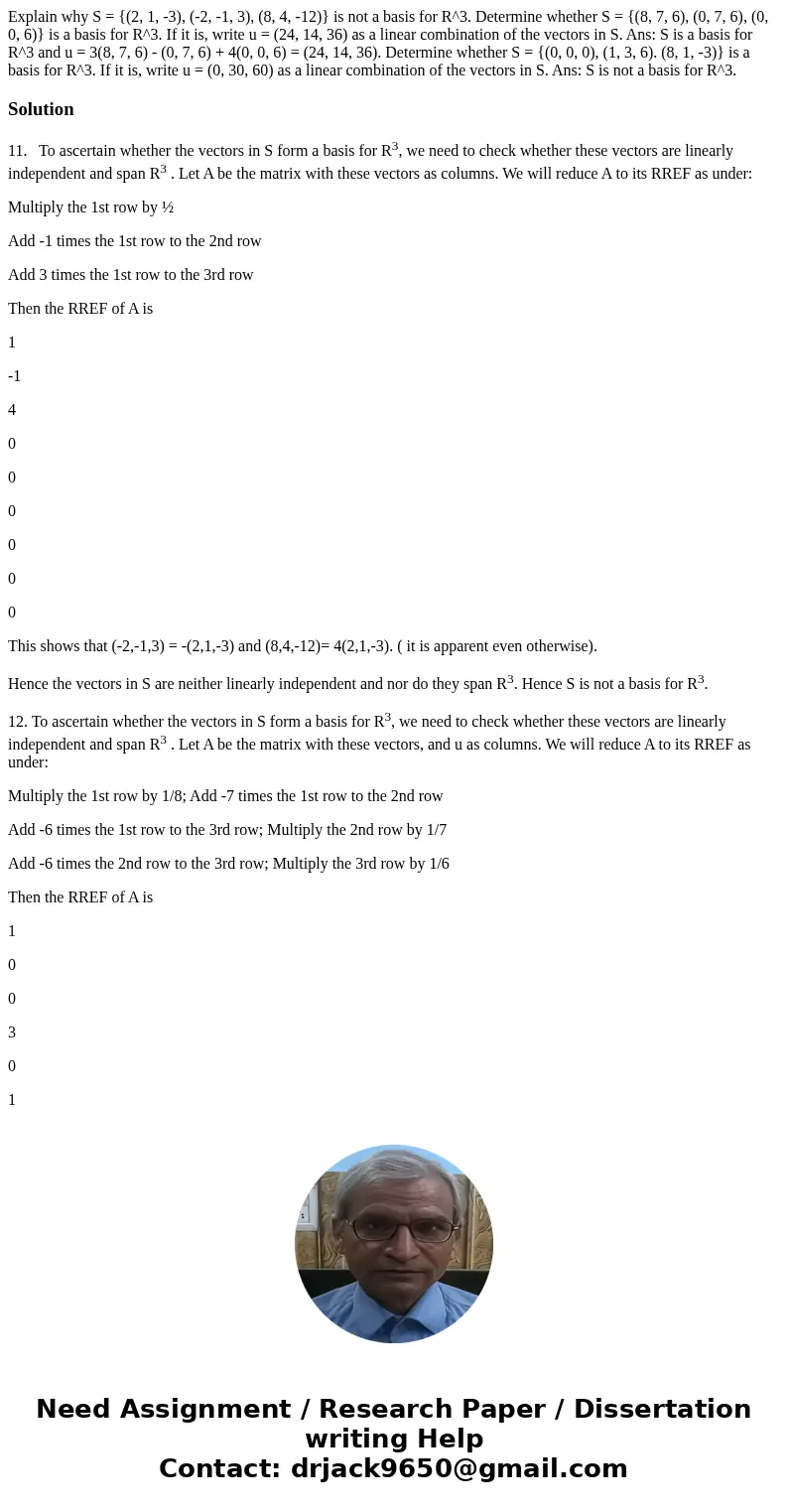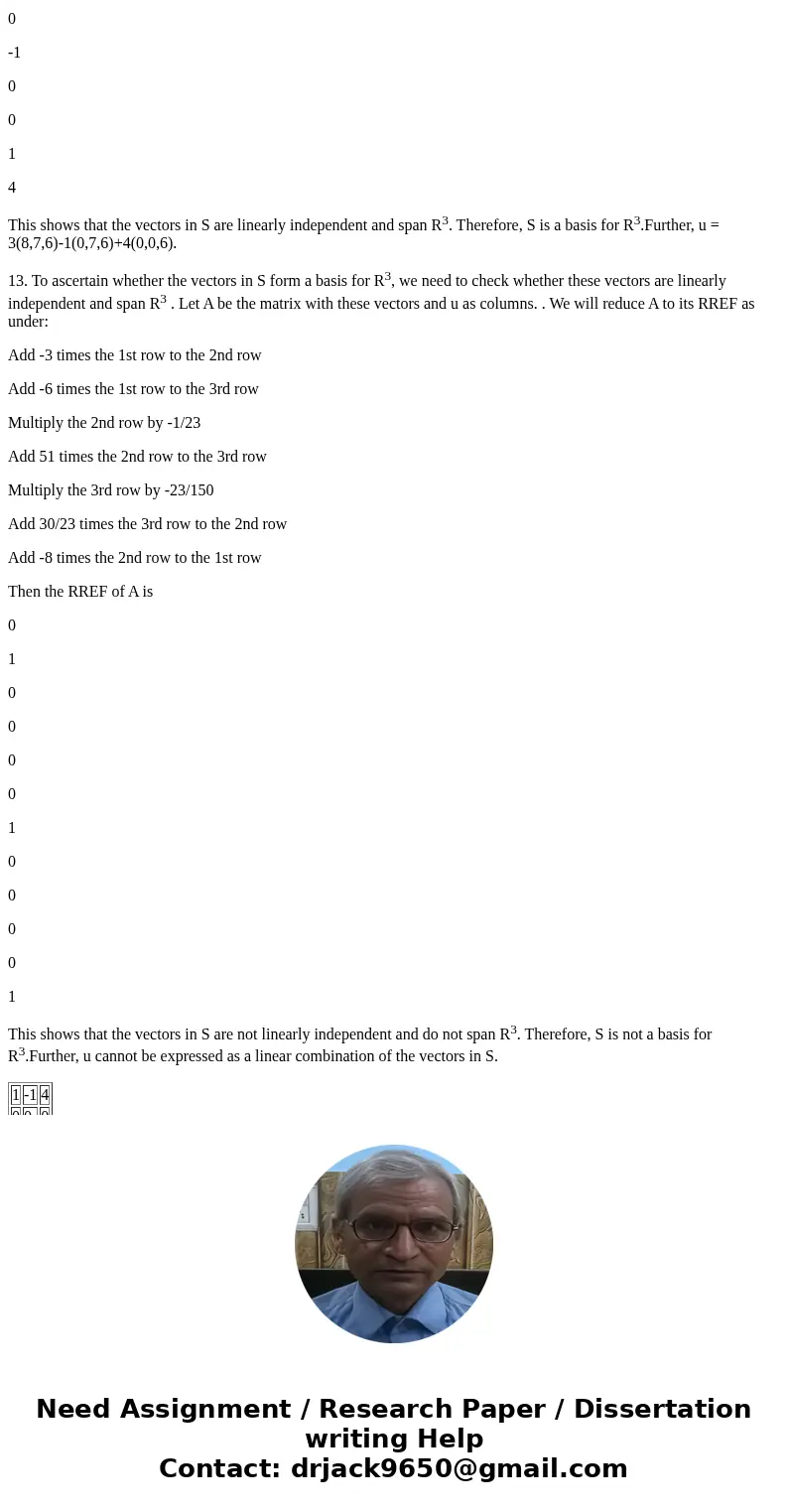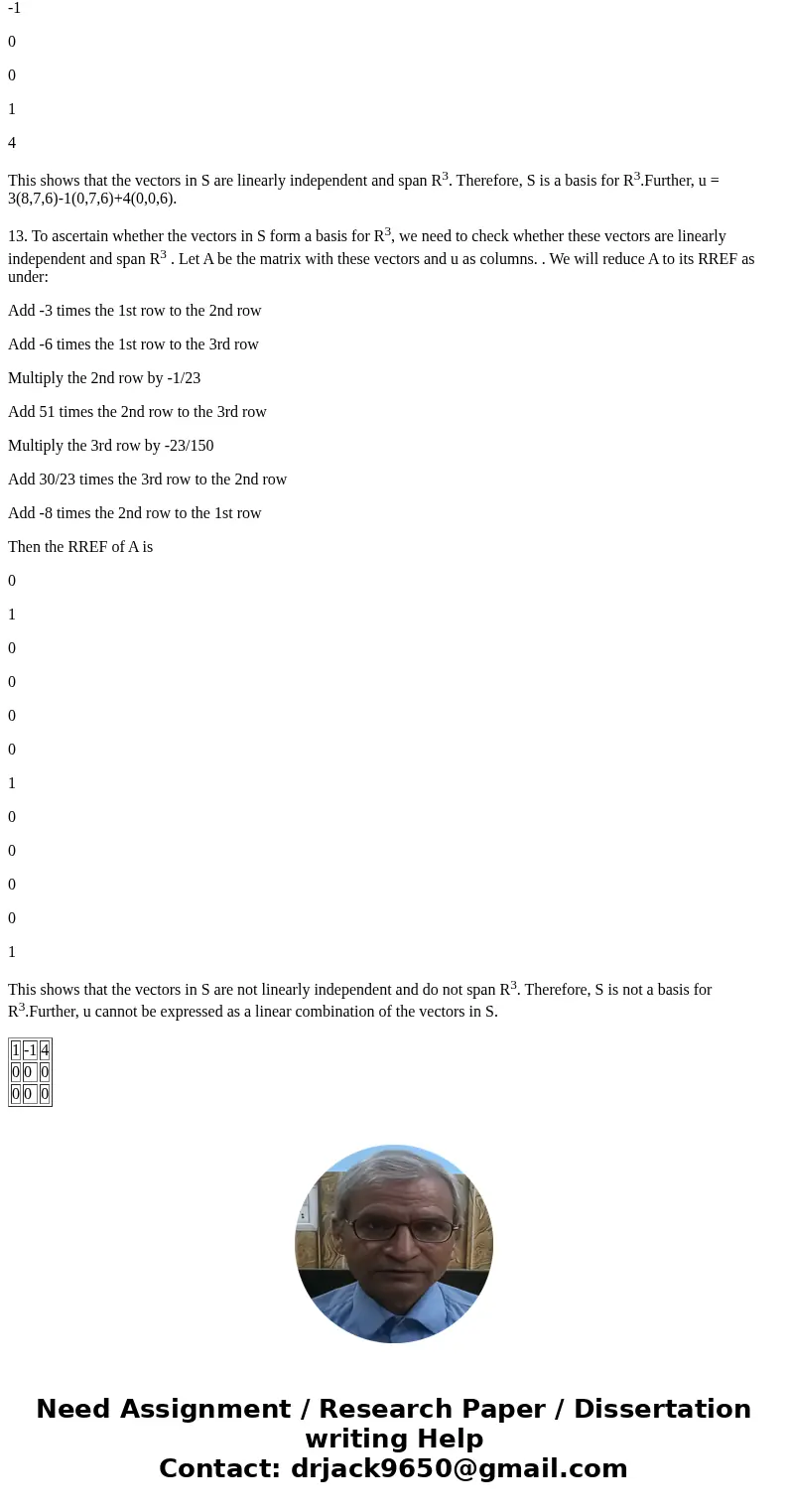Explain why S 2 1 3 2 1 3 8 4 12 is not a basis for R3 Dete
Solution
11. To ascertain whether the vectors in S form a basis for R3, we need to check whether these vectors are linearly independent and span R3 . Let A be the matrix with these vectors as columns. We will reduce A to its RREF as under:
Multiply the 1st row by ½
Add -1 times the 1st row to the 2nd row
Add 3 times the 1st row to the 3rd row
Then the RREF of A is
1
-1
4
0
0
0
0
0
0
This shows that (-2,-1,3) = -(2,1,-3) and (8,4,-12)= 4(2,1,-3). ( it is apparent even otherwise).
Hence the vectors in S are neither linearly independent and nor do they span R3. Hence S is not a basis for R3.
12. To ascertain whether the vectors in S form a basis for R3, we need to check whether these vectors are linearly independent and span R3 . Let A be the matrix with these vectors, and u as columns. We will reduce A to its RREF as under:
Multiply the 1st row by 1/8; Add -7 times the 1st row to the 2nd row
Add -6 times the 1st row to the 3rd row; Multiply the 2nd row by 1/7
Add -6 times the 2nd row to the 3rd row; Multiply the 3rd row by 1/6
Then the RREF of A is
1
0
0
3
0
1
0
-1
0
0
1
4
This shows that the vectors in S are linearly independent and span R3. Therefore, S is a basis for R3.Further, u = 3(8,7,6)-1(0,7,6)+4(0,0,6).
13. To ascertain whether the vectors in S form a basis for R3, we need to check whether these vectors are linearly independent and span R3 . Let A be the matrix with these vectors and u as columns. . We will reduce A to its RREF as under:
Add -3 times the 1st row to the 2nd row
Add -6 times the 1st row to the 3rd row
Multiply the 2nd row by -1/23
Add 51 times the 2nd row to the 3rd row
Multiply the 3rd row by -23/150
Add 30/23 times the 3rd row to the 2nd row
Add -8 times the 2nd row to the 1st row
Then the RREF of A is
0
1
0
0
0
0
1
0
0
0
0
1
This shows that the vectors in S are not linearly independent and do not span R3. Therefore, S is not a basis for R3.Further, u cannot be expressed as a linear combination of the vectors in S.
| 1 | -1 | 4 |
| 0 | 0 | 0 |
| 0 | 0 | 0 |



 Homework Sourse
Homework Sourse